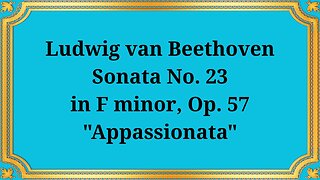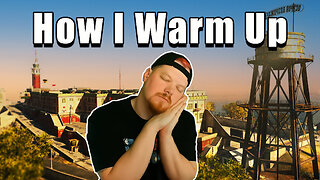Premium Only Content

Bach Sonata for Harpsichord & Cello
Johann Sebastian Bach was a master composer of the Baroque era, renowned for his numerous works for solo instruments and ensembles. Among his many compositions are the Sonata for Harpsichord & Cello in D major, BWV 1028, the Sonata for Harpsichord & Cello in G major, BWV 1027, and the Sonata for Harpsichord & Cello in g minor, BWV 1029. In this essay, we will explore the history and musical characteristics of these three works.
The Sonata for Harpsichord & Cello in D major, BWV 1028, is a work in three movements that showcases the close interplay between the harpsichord and cello. The opening movement is marked by a lively and joyful theme, with both instruments taking turns to play the melody. The second movement is slower and more contemplative, with a beautiful and expressive melody that is passed between the two instruments. The final movement is a fast and virtuosic fugue, with complex and intricate passages that demonstrate Bach's technical mastery.
The Sonata for Harpsichord & Cello in G major, BWV 1027, is a four-movement work that also features the harpsichord and cello in close collaboration. The first movement is marked by a lively and joyful theme, with both instruments playing together in unison. The second movement is a slower and more introspective melody, with the cello taking the lead. The third movement is a lively and energetic minuet, with the harpsichord and cello playing in dialogue. The final movement is a fast and virtuosic gigue, with both instruments showcasing their technical prowess.
The Sonata for Harpsichord & Cello in g minor, BWV 1029, is a work in three movements that is considered one of Bach's most complex and challenging compositions. The opening movement is marked by a somber and introspective theme, with both instruments playing together in unison. The second movement is a fast and virtuosic fugue, with complex and intricate passages that showcase Bach's technical skill. The final movement is a lively and energetic gigue, with both instruments playing together in dialogue and demonstrating their virtuosity.
In conclusion, Bach's Sonatas for Harpsichord & Cello in D major, BWV 1028, G major, BWV 1027, and g minor, BWV 1029, are outstanding examples of his mastery of the Baroque style and his technical skill as a composer. These works showcase the close interplay between the harpsichord and cello, with both instruments sharing the melodic and harmonic responsibilities. The Sonatas remain popular among musicians and audiences alike, and are considered among the most challenging works in the cello and harpsichord repertoire.
#Bach #Sonata #classical_music
-
 23:19
23:19
Classical music_Music Inspiration
7 days agoLudwig van Beethoven Sonata No. 23 in F minor, Op. 57 "Appassionata"
231 -
 14:09
14:09
Zoufry
2 days agoThe Hunt for The Biggest Art Thief in US History
1383 -
 29:23
29:23
DeVory Darkins
1 day ago $12.92 earnedTrump makes BOMBSHELL Announcement as Democrat Judge issues SHOCKING Order
12.8K169 -
 28:31
28:31
James Klüg
1 day agoDemocrats Are FURIOUS With Trump’s Immigration Policy But Know Nothing About It | Part 2
14K17 -
 13:55
13:55
itsSeanDaniel
2 days agoWOKE Nutjob Liberal Finally Proved JUST HOW DUMB She Really is
4.32K5 -
 8:01
8:01
MattMorseTV
11 hours ago $8.50 earnedHe's ACTUALLY doing it...
65.9K58 -
 15:04
15:04
GritsGG
14 hours agoHow the Rank 1 Player Warms Up on Warzone Before Stream!
6.57K -
 1:54:43
1:54:43
Side Scrollers Podcast
18 hours agoVoice Actor ROASTED For Racist Double Standard + Influencer FELONY After Con Threat | Side Scrollers
30.9K7 -
 11:03
11:03
The Pascal Show
18 hours ago $1.12 earned'THAT BABY IS GONE!' Neighbors Break Silence On Emmanuel Haro Case... Wildlife Took Remains?!
7.9K -
 LIVE
LIVE
Lofi Girl
2 years agoSynthwave Radio 🌌 - beats to chill/game to
355 watching